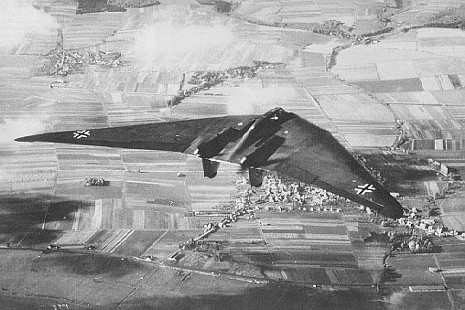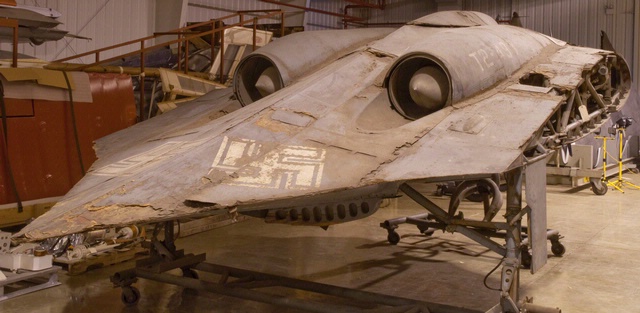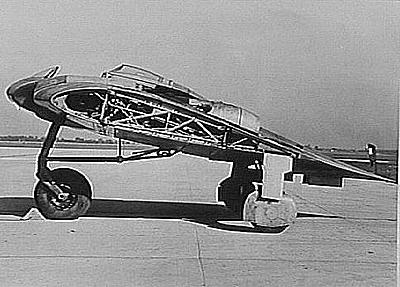 |
| Ho-229 illustration by Dragon Models |
 |
| A Horten Flying Wing prototype being constructed |
The Hortens promised Herman Goering that their new fighter would deliver the decisive blow to the Allies with its unmatched speed and heavy armament. Weather in its fighter or ground-attack configurations, the Ho-229 could destroy targets with up to a ton of bombs and its 30mm heavy cannons. It was also said to have radar absorption properties that made it hard to detect due to its wooden airframe and radar absorbent paint.
 |
| The last remaining Horten Ho-229 flying wing owned by the Smithsonian Museum |
Even if it was ahead of its time, lucky for the Allies the war was over before this wonderweapon could see active service. It was amazing how this sleek, wooden, jet-powered fighter managed to be controllable even before computers that stabilize today's flying wing aircraft like the B-2 Spirit. There were also supposed plans of making a strategic bomber version of it.
More Ho-229 photos





























The Germans were nearly 40 years ahead of the allies in technology. Only Jack Northrop had the vision to develop a Flying Wing and he was frustrated at every turn by US politics. Had the war dragged on until late 1946, England would have certainly been overwhelmed by Germany and the outcome of the entire war may have been reversed - in large order due to these Horton aircraft.
ReplyDelete